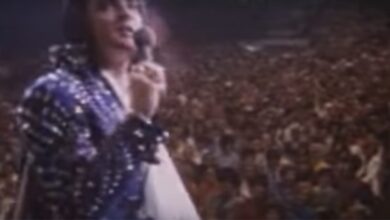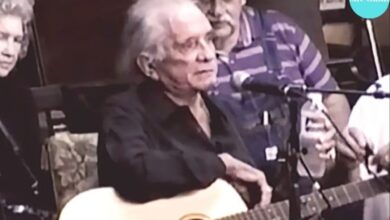In The 1950s, This Dance Was Widely Known, Can You Remember It Today
In February 1958, American high school gyms and sock hops were electrified by a dance craze that perfectly captured the spirit of the era: “The Stroll.” This line dance, brimming with youthful exuberance and the burgeoning rock ‘n’ roll culture, quickly became a symbol of fun and spontaneity. Originating from African American communities, “The Stroll” gained widespread popularity thanks to its exposure on television, particularly through Dick Clark’s “American Bandstand,” where teenagers across the nation eagerly adopted it at their local gatherings.
“The Stroll” was more than just a dance; it was a cultural touchstone of the 1950s, reflecting the social dynamics and youthful energy of the time. The dance featured two parallel lines of participants facing each other, creating a central aisle. Couples would then take turns strutting down the aisle to the music, each adding their own personal flair to their movements. This structure allowed for both group interaction and individual expression, resonating with a generation eager to define themselves within the social landscape.
The dance was closely associated with the song “The Stroll,” performed by the Canadian vocal group The Diamonds. Known for their smooth harmonies and catchy doo-wop tunes, The Diamonds played a crucial role in popularizing the dance. Their version of “The Stroll” was more than just a hit single; it became the anthem of a movement, encapsulating the era’s joy, rebellion, and collective spirit. Dave Somerville, the group’s charismatic lead singer, provided the voice that guided dancers through the upbeat melody, becoming a central figure in this cultural phenomenon.
The widespread appeal of “The Stroll” was remarkable, transcending racial and social boundaries in a time of significant segregation in the United States. Its straightforward nature made it easy for anyone to join in, while its inherent coolness made it irresistibly attractive. Teenagers, dressed in their finest outfits, flocked to dance floors across the country, eager to participate in the latest trend with a confidence reflective of post-war America’s optimism.
As “The Stroll” became a nationwide sensation, it symbolized the unity and enthusiasm of a generation looking to express itself through new forms of entertainment. The dance’s simple yet engaging format allowed it to thrive in various social settings, making it a beloved part of 1950s youth culture. Its influence extended beyond the dance floors, embodying the spirit of an era defined by rapid social change and a vibrant, emerging pop culture.





